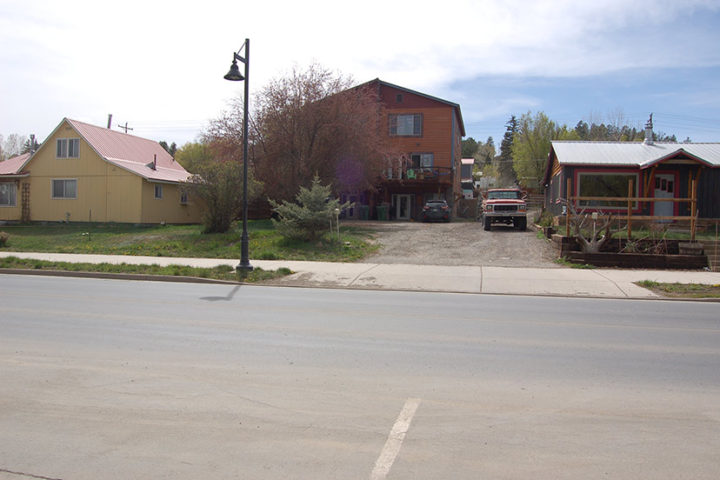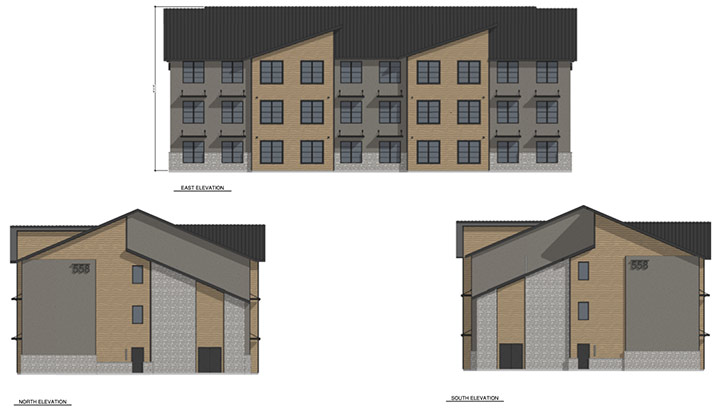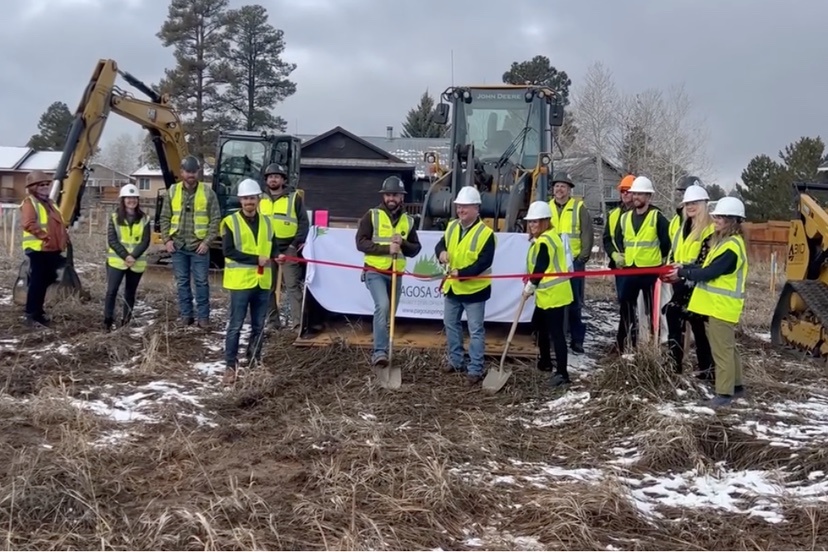Your Input Matters. Your feedback is essential to ensure the new code aligns with the community’s vision for the future…
— from the Town of Pagosa Springs planning website, MyPagosa.org
On Friday, in Part Three of this editorial series, I asked two questions that I hope are not merely rhetorical.
Is the efficient use of private property for housing purposes, viewed as a detriment to the community?
And if so, why?
If we read the Town’s Land Use and Development Code (LUDC), we can easily come to the conclusion that ‘efficiency’ in the use of private property — that is to say, allowing buildings to occupy a maximum footprint, and a height considered reasonable, globally, in most urban situations — is considered detrimental here in Archuleta County.
Because Pagosa was historically a poor, agricultural community, our homes have tended to be small and one-story. The LUDC is written to preserve that low-income architectural character.
We’re unable to identify who, exactly, defined the efficient use of private property for housing purposes, as detrimental. The Town LUDC has been the work of numerous people… just as the current update to that code, currently in draft form, is the work of numerous people, including consultants Logan Simpson, the Town Planning Department, the Town Planning Commission, the volunteer LUDC Steering Committee, and the people who have shared their ideas about the LUDC in the Town’s ‘MyPagosa.org’ web forum.
Actually, only one person had posted in the LUDC web forum, as of yesterday.
Kelly Lewis wrote:
Hello and thank you for the opportunity to give feedback! I would love to see a clause that regulates short-term rental density in residential areas going forward. Most tourist mountain towns have regulations that control density or highly regulate short-term rentals in residential areas, especially near downtown. I would love to see Pagosa adopt a density measure to keep our neighborhoods intact while allowing a moderate amount of short-terms that will be accountable to their neighbors. 1 per block would be my preference! :)
Thanks, again!
I believe Ms. Lewis is advocating a ‘density measure’ that would limit the number of short-term rentals (STRs) allowed in this or that nighborhood… and not a density limit on residential housing per se. But the LUDC and the Town’s zoning have already severely limited the housing density within the town limits, if we compare our downtown neighborhoods to more ‘urban’ communities. I recall a neighborhood uproar, many years ago, when developer Todd Shelton constructed a four-unit apartment on South 8th Street.
The uproar led to a new prohibition in the LUDC, that forbids anyone from building a similar four-unit apartment in that neighborhood.
How frightening that apartment looks… towering, as it does, like a monstrous monolith over the innocent little single family homes historically constructed on South 8th Street…
(…he wrote, sarcastically.)

For purposes of comparison, here is a drawing of the building that the Town Planning Commission recently approved for a vacant parcel at the corner of Apache Street and Hot Springs Boulevard, a few blocks away from Mr. Shelton’s four-plex.
Three stories tall. 24 units. ‘Workforce housing’ sponsored by the Town government, scheduled to be built by Texas-based Servitas.

The Town government can approve something like this, because the Planning Commission and the Town Council can ignore the LUDC’s density limits whenever it suits them.
But private developers like Todd Shelton and Peter Hurley (mentioned in Part Three) are bound by the same LUDC that the Town government can ignore at will.
Does it sound like I’m complaining? That might be, because I’m complaining.
For the past two decades, at least, the Town government has used its LUDC to prohibit the very types of housing they now view as desperately necessary. Instead of letting the community grow organically, based upon supply and demand, the Town government was bending over backwards to preserve the ‘character’ of downtown Pagosa Springs.
Unfortunately for the families who are now paying 50% of their monthly income for housing — or who, worse yet, are camping in the national forest — the definition of ‘preserving the town’s character’ meant ‘preserving the architectural look’ and ‘preserving the architectural density’.
…If only the definition of the town’s ‘character’ had been: ensuring that a diverse mix of working and retired families can afford to live in our community.
Have we waited too long to wake up and smell the coffee?
The discussion above can be seen as my short answer to the questions posed at the very beginning of this article.
Is the efficient use of private property for housing purposes, viewed as a detriment to the community?
And if so, why?
For the past two decades, the efficient use of private property has been viewed as a detriment to the community, for that past 20 years, because it conflicted with the architectural styles and traditional density that developed between 1900 and 1980 — back when a working class family could still afford a single family home without risking bankruptcy. Our existing Town LUDC and zoning was built upon the belief that preserving traditional land uses and density would preserve the essential spirit of the community.
The very same belief is embedded in the Archuleta County Land Use Regulations, which also prohibit efficiency and reasonable density on private property outside the town limits. Ditto, the covenants and restrictions put in place, historically, by nearly every subdivision developer in Archuleta County.
For at least a couple of decades, our community has been wearing a government-enforced straight-jacket.

Of course, regulations are not the only reason why Pagosa Springs has become dysfunctional, in terms of workforce housing. The primary reason is good old fashion greed, coupled with the belief that a residential home is an investment tool that ought to perpetually increase in value.
There are other reasons as well.
Some people might question the use of local taxes and fees to help address a crucial social crisis like housing, and that’s certainly a valid topic for debate.

